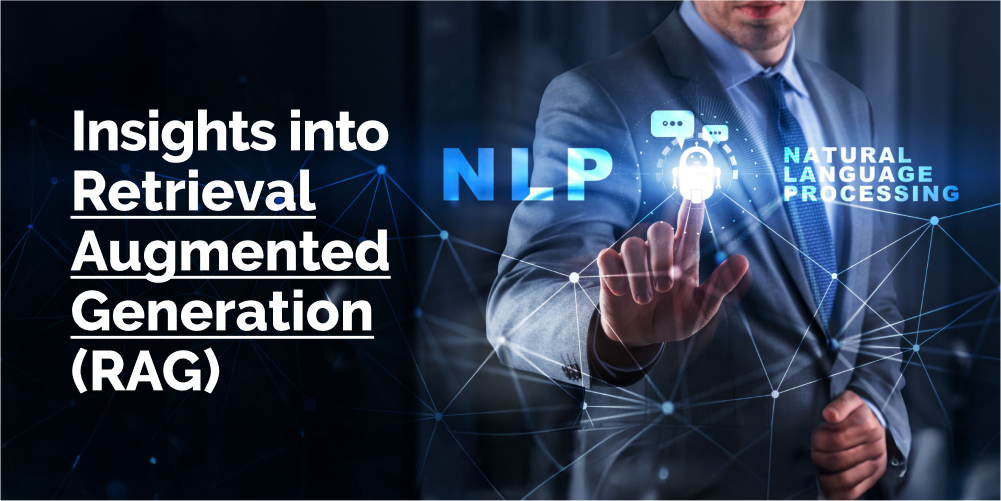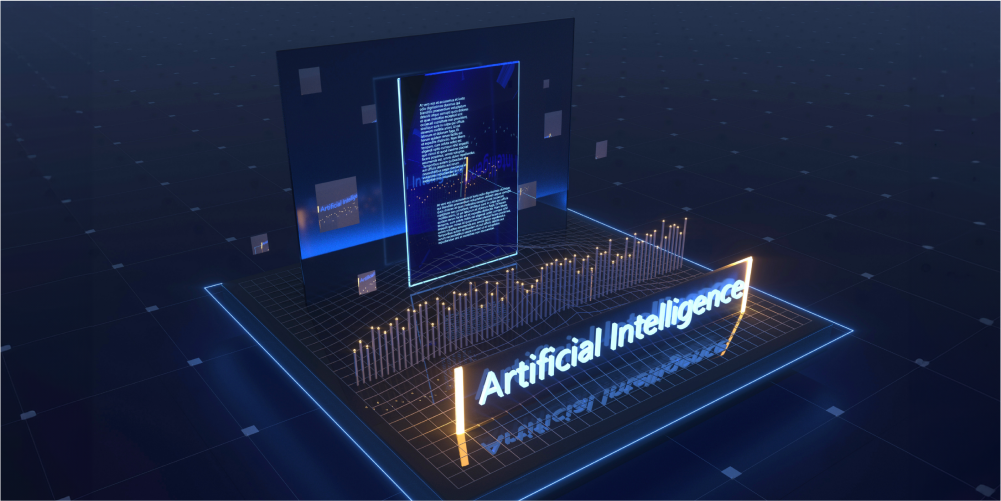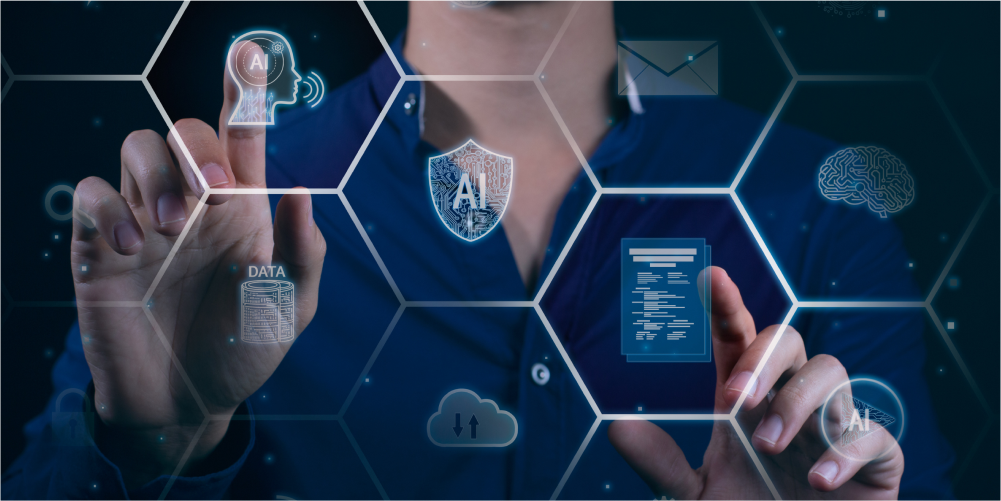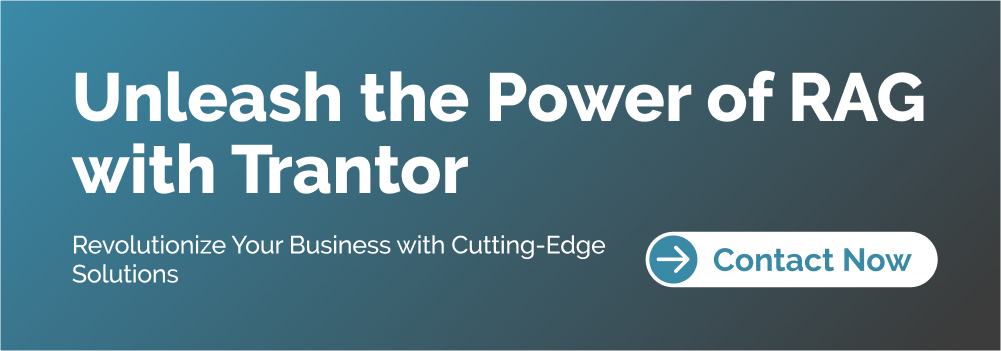AI, zBlog
Understanding Retrieval Augmented Generation (RAG): A Basic Breakdown
atif | Updated: April 18, 2024

Introduction
In the rapidly evolving landscape of natural language processing (NLP), researchers and engineers are continually seeking ways to enhance the capabilities and performance of language models. One particularly intriguing development in this field is Retrieval Augmented Generation (RAG), a novel approach that combines the power of large language models with the knowledge retrieval capabilities of search engines.
In this blog post, we will dive deep into the concepts and inner workings of RAG, exploring how it differs from traditional language models, its key advantages, and the potential applications that make it a game-changer in the world of NLP.
The Limitations of Traditional Language Models
Traditional language models, such as GPT-3 and BERT, have demonstrated remarkable abilities in generating human-like text, answering questions, and tackling a wide range of natural language tasks. These models are trained on vast amounts of textual data, allowing them to learn the patterns and nuances of language, and to generate coherent and contextually relevant output.
However, despite their impressive capabilities, traditional language models have some inherent limitations. One of the primary challenges is their reliance on the information and knowledge contained within their training data. While these models can generate fluent and convincing text, their knowledge is essentially static and bounded by the information they were trained on. This means that their ability to provide accurate and up-to-date responses to queries is often limited, as they may lack the most recent or specialized knowledge required to address certain questions or tasks.
Additionally, traditional language models can struggle with tasks that require a deep understanding of the world, such as answering complex questions, providing detailed explanations, or generating content that requires a high level of factual accuracy. This is because the training data, while extensive, may not always cover the breadth and depth of knowledge needed to address such tasks effectively.
The Rise of Retrieval Augmented Generation

Enter Retrieval Augmented Generation (RAG), a groundbreaking approach that aims to address the limitations of traditional language models by seamlessly integrating information retrieval capabilities into the language generation process.
The key idea behind RAG is to leverage the vast troves of information available on the internet and in other external knowledge sources and to dynamically retrieve relevant information to augment the language model’s output. This is achieved by coupling a language model with a retrieval system, which can quickly and efficiently search through large collections of documents to find the most relevant information to include in the generated text.
The architecture of an RAG system typically consists of two main components:
- 1. Language Model: The language model component is responsible for generating the output text, drawing upon the knowledge and patterns it has learned during the training process. This is often a large, pre-trained language model, such as GPT-3 or T5, which has been fine-tuned on specific tasks or datasets.
- 2. Retrieval System: The retrieval system is the module that searches through external knowledge sources, such as Wikipedia, online databases, or other curated collections of information, to find the most relevant pieces of information to include in the language model’s output. This retrieval system is often powered by an information retrieval engine, such as Elasticsearch or Lucene, which can efficiently index and search through large volumes of textual data.
The integration of these two components is what sets RAG apart from traditional language models. During the generation process, the language model generates an initial output, which is then passed to the retrieval system. The retrieval system then searches for the most relevant information to augment the language model’s output, and the augmented text is then returned as the final result.
This process of iterative refinement and information retrieval allows RAG models to access a much broader and more up-to-date knowledge base, enabling them to provide more accurate, detailed, and context-relevant responses to a wide range of queries and tasks.
Key Advantages of Retrieval Augmented Generation

The integration of retrieval capabilities into language models through RAG offers several key advantages over traditional language models:
- 1. Improved Knowledge and Factual Accuracy: By dynamically retrieving relevant information from external knowledge sources, RAG models can provide more accurate and up-to-date responses to queries that require detailed factual knowledge. This is particularly useful for tasks such as question answering, knowledge-intensive content generation, and providing detailed explanations on complex topics.
- 2. Enhanced Contextual Awareness: The retrieval process in RAG allows the language model to better understand the context of the input and to tailor its output accordingly. This can lead to more coherent and relevant responses, as the model can draw upon the most pertinent information to address the specific question or task at hand.
- 3. Adaptability and Scalability: RAG models are inherently more adaptable and scalable than traditional language models, as they can easily be updated with new information from external sources. This means that they can remain current and relevant, even as the world and the available knowledge evolve over time.
- 4. Improved Transparency and Interpretability: By incorporating the retrieval process into the language model, RAG systems can provide greater transparency and interpretability in their decision-making. The ability to trace the sources of the information used in the model’s output can help users better understand the reasoning behind the generated text, and can also aid in debugging and improving the model.
- 5. Versatility and Generalization: The modular design of RAG models, with the language model and retrieval system as distinct components, allows for greater versatility and the potential for better generalization to a wide range of tasks and domains. This modularity enables the language model and retrieval system to be independently optimized and fine-tuned for specific applications.
How Retrieval Augmented Generation Works

To better understand the inner workings of Retrieval Augmented Generation, let’s dive into the step-by-step process of how a RAG model generates output:
- 1. Input Processing: The process begins with the language model receiving an input, such as a question, a prompt, or a partially generated piece of text.
- 2. Initial Generation: The language model then generates an initial output based on the input, drawing upon the knowledge and patterns it has learned during training.
- 3. Retrieval: The generated output is then passed to the retrieval system, which searches through the available external knowledge sources (e.g., Wikipedia, databases, web pages) to find the most relevant information to augment the language model’s output.
- 4. Retrieval Scoring: The retrieval system scores the relevance of the retrieved information to the language model’s output, using techniques such as semantic similarity, term frequency-inverse document frequency (TF-IDF), or more advanced neural retrieval models.
- 5. Retrieval Fusion: The most relevant retrieved information is then fused with the language model’s initial output, using techniques such as concatenation, weighted averaging, or more sophisticated fusion mechanisms.
- 6. Iterative Refinemen: The fused output is then passed back to the language model, which can refine the text further based on the additional retrieved information. This iterative process of generation, retrieval, and refinement can continue until the desired output quality is achieved.
The specific implementation details of an RAG system can vary, and researchers have explored different architectural designs and algorithmic approaches to optimize the performance and efficiency of the retrieval-augmented generation process.
For example, some RAG models use dense retrieval techniques, where the retrieval system is trained to directly map the language model’s output to relevant passages or documents, rather than relying on traditional keyword-based search. Other approaches incorporate reinforcement learning or other advanced techniques to learn the optimal retrieval and fusion strategies.
Applications of Retrieval Augmented Generation

Retrieval Augmented Generation has a wide range of potential applications that leverage its ability to provide more accurate, contextual, and knowledge-intensive responses. Here are a few examples of how RAG can be utilized:
- 1. Question Answering: One of the primary applications of RAG is in the field of question answering, where the model is tasked with providing accurate and informative answers to a wide range of questions. By dynamically retrieving relevant information from external sources, RAG models can go beyond the limitations of traditional language models and provide more detailed and authoritative responses.
- 2. Fact-Checking and Claim Verification: RAG models can be employed in systems that aim to verify the accuracy of claims, statements, or information by cross-referencing the generated output with reliable sources of information. This can be particularly useful in combating the spread of misinformation and fake news.
- 3. Content Generation: RAG can be leveraged to enhance the quality and accuracy of content generation tasks, such as writing news articles, blog posts, or educational materials. By incorporating relevant information from external sources, RAG models can produce more comprehensive, well-researched, and factually-grounded content.
- 4. Personalized Recommendations: By tailoring the retrieval process to the user’s preferences and history, RAG models can provide personalized recommendations for products, services, or content, based on the user’s specific needs and interests.
- 5. Scientific and Technical Writing: In domains that require a high level of factual accuracy and in-depth knowledge, such as scientific and technical writing, RAG models can assist researchers, engineers, and writers in producing more reliable and authoritative content by seamlessly incorporating relevant information from scientific databases, technical manuals, and other specialized sources.
- 6. Conversational Agents and Chatbot: RAG can be integrated into conversational agents and chatbots to enhance their ability to engage in more natural and informative dialogues, by drawing upon a broader knowledge base and providing more context-relevant responses.
- 7. Educational Applications: RAG models can be employed in educational settings to provide personalized tutoring, answer complex questions, and generate educational content that is tailored to the specific needs and learning styles of students.
As the field of Retrieval Augmented Generation continues to evolve, researchers and practitioners are likely to discover even more innovative applications that leverage the unique capabilities of this approach.
Challenges and Limitations of RAG

While Retrieval Augmented Generation offers numerous advantages over traditional language models, it also faces some challenges and limitations that need to be addressed:
- 1. Retrieval Accuracy and Relevance: The performance of a RAG model is heavily dependent on the accuracy and relevance of the information retrieved from the external sources. Inaccurate or irrelevant retrieval can lead to suboptimal or even incorrect outputs, which can be particularly problematic in domains that require a high level of factual accuracy.
- 2. Computational Efficiency: The additional step of information retrieval can increase the computational overhead and latency of the generation process, especially when working with large-scale knowledge bases. Optimizing the retrieval system and the integration with the language model is crucial to maintaining efficient and real-time performance.
- 3. Ethical Considerations: The use of external information sources can raise concerns about the trustworthiness, privacy, and potential biases of the data used to augment the language model’s output. Careful curation and ethical oversight of the knowledge sources are essential to ensure the responsible and transparent deployment of RAG systems.
- 4. Interpretability and Explainability: While RAG models can provide more transparency by linking the generated output to the retrieved information, there are still challenges in fully explaining the reasoning behind the model’s decisions and output. Developing more interpretable and explainable RAG architectures is an active area of research.
- 5. Limited Knowledge Scope: Despite their ability to access a broader knowledge base, RAG models are still limited by the information available in their external sources. Handling tasks that require knowledge beyond the scope of the retrieved information remains a challenge.
- 6. Coherence and Fluency: The integration of retrieval and generation can sometimes result in output that lacks the natural flow and coherence of traditional language models. Ensuring a seamless fusion of the retrieved information and the language model’s output is an ongoing area of research.
As the field of Retrieval Augmented Generation continues to evolve, researchers and engineers are actively working to address these challenges and limitations, paving the way for more robust, efficient, and reliable RAG systems.
Conclusion
Retrieval Augmented Generation represents a significant leap forward in natural language processing, offering a promising approach to enhancing the capabilities of language models by seamlessly integrating information retrieval capabilities.
By dynamically accessing and incorporating relevant knowledge from external sources, RAG models can provide more accurate, context-aware, and knowledge-intensive responses, addressing the limitations of traditional language models. This versatile approach can transform a wide range of applications, from question-answering and content generation to conversational agents and educational tools.
As the Retrieval Augmented Generation continues to evolve, we expect to see further advancements in the underlying architectures, retrieval algorithms, and integration strategies, leading to even more powerful and effective language models that can better assist and empower users in their information-seeking and knowledge-driven tasks.
Trantor is well-positioned to leverage the advancements in Retrieval Augmented Generation to develop innovative solutions that cater to the growing demand for accurate, context-aware, and knowledge-intensive language models. By integrating RAG-based technologies into your product offerings, Trantor can provide customers with cutting-edge tools for tasks such as question answering, content generation, and personalized recommendations, giving them a competitive edge in their respective domains. As a leader in machine learning and natural language processing, Trantor’s expertise and commitment to innovation can shape the future of RAG, driving the field forward and ensuring that your clients benefit from the transformative power of this groundbreaking approach.




